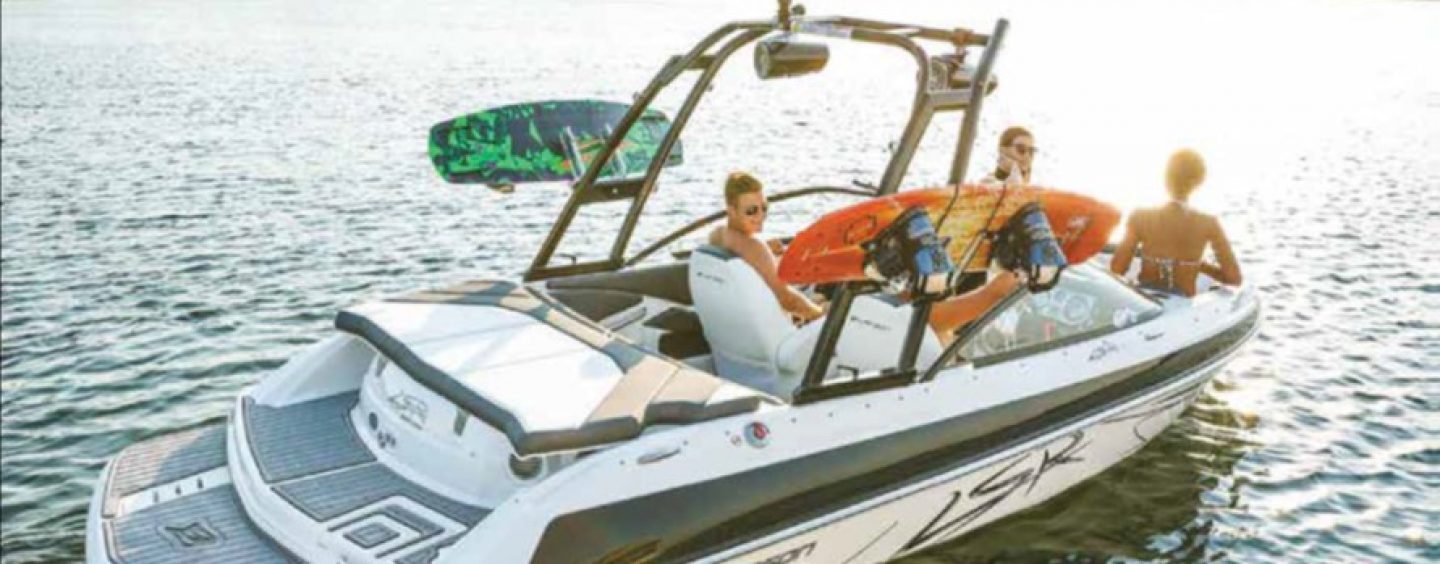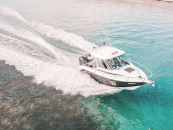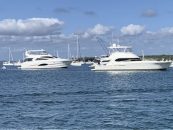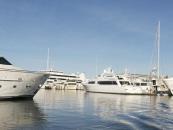By Courtney Angus and Andy Kancachian
____________________________
SAFETY TIPS
Wear a life jacket that fits correctly.
Use a designated spotter to alert the driver when a rider falls and to keep an eye out for other boats or objects in the water.
Remember practice makes perfect.
_____________________________
Wakeboarding has become very popular on the Gold Coast. If you want to learn this watersport that many people are getting hooked on, read on and you will be out on the water in no time!
THE BASICS
Correct stance. Before you strap onto your wakeboard, you need to determine the correct stance. The best way to figure out if you are a regular (left) or a goofy (right) foot-forward is to think about how you would ride a scooter or skateboard. The foot you push with and the foot you put forward will be the same when setting up your feet on your wakeboard. The bindings should be set up the same way for beginners and pros. Very slightly angle your toes out evenly and set bindings the same distance from the nose and from the tail of the board. A narrow or wide stance depends on the rider’s preference.
On-the-ground training is very important! Learning the right positions and techniques before getting in the water gives a beginner a huge advantage! Sit on the ground with your feet planted in front of you with your knees bent up to your chest. Have your partner stand in front of you with a rope and handle. Hold the handle with two hands, and straight arms. As your partner gently pulls you up, do not resist. Reach forward, and move your weight over your feet into a squat position (the frog position). Stand up slowly from the frog position, and move the handle down towards your leading hip.
Turning. It is all about the weight distribution from your toes to your heels, coordinated with your handle position, similar to snowboarding and skateboarding. Put weight on your toes and pull the handle towards your “back pocket.” Then put weight on your heels, and slowly let the handle move away from your body. Never pull the handle towards your chest. It may cause you to over balance.
Switching feet. Once you are pulled out of the water by the boat and you are successful at standing on your wakeboard, you must next master the switch from front to back foot. Squat down low to avoid a big crash. The taller you stand, the further you have to fall! Lift up your toes and move the handle from your front hip to your back hip in a semi-circle motion.
Jumping the wake. Ultimately you want to be able to jump wake, so approach from as far away from the wake as possible. Keep your back at a right angle to the water. As you reach the wake, straighten up your body and push off the water. As you lift off, pull the handle towards your hips.
Boat Driver. Essential for wakeboarding is having the correct boat setup. The tow rope between the boat and the rider must be taut, before you attempt to pull the rider out, by slowly idling the boat forward until the slack is taken up. The speed can then be slowly increased. When towing beginners, it is best to try and stay under 20mph (around 17 knots or 32kph). The driver must be aware of the right speed for the rider, based on the rider’s abilities and instructions. This can assist the rider to get more air over the wake. When driving, keep a constant speed and the boat steering in a straight line. To avoid rider fatigue keep the tows to 15-20mins and the driver should rest often to ensure they are always alert. When the rider falls, do not power turn so as to avoid creating large chop but rather slow down and turn smoothly.
EQUIPMENT
Rope. A sensible rope length for beginners is 65 feet. For intermediate riders, it is typically 65 to 75 feet. For advanced riders, it is 75 to 85 feet in length. Before you go out and buy a rope, note the importance of having a good quality, non-stretch rope specifically designed for wakeboarding.
Board. When choosing the right board size, one of the biggest factors to consider is rider weight. Unlike the board you might use when snowboarding, wakeboarding will require your board to float sufficiently on top of the water. So it is important to use the specific sizing guidelines of each manufacturer, as the shapes and performance of the board vary. If you intend to share the board, then base your calculations on either the heaviest person to use the board, or the person who will use the board the most. Here are the average weight/height guidelines:
<45kgs = <130cm,
40-70kgs = 130-134cm,
60-80kgs = 135-139cm,
75-115kgs = 140-144cm 90-125+kgs = >144cm. Boat. There are many boat brands specifically designed for wakeboarding. These models include tanks below the floor that can be filled with water to weigh the boat down, so as to increase the wake for the rider. However, you can use any boat for wakeboarding and either weigh the boat down by positioning passengers at the rear of the boat or purchase some modular watertight ballasts. Be sure that the boat is weighed down evenly to ensure even height wake. And remember that beginners do not need too large a wake to practise jumping.
Video recorder. A video camera, GoPro or phone camera is a great way to record the ride. It will show the rider what they look like out on the water and what they might be doing wrong. They can also get a kick out of watching the replays years from now and laughing at how bad they were when they were starting out.
Published in print July-September 2021






























